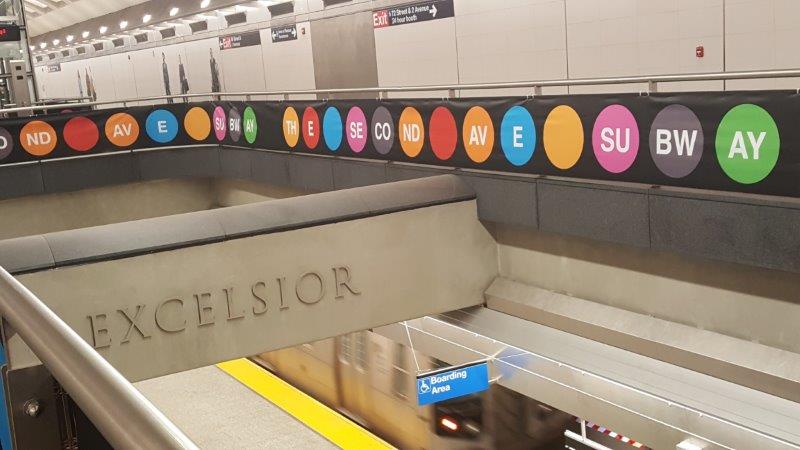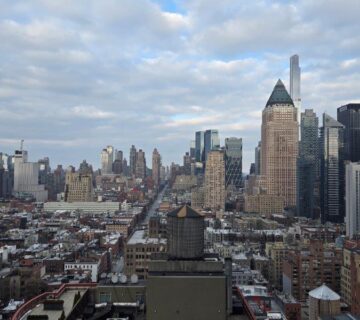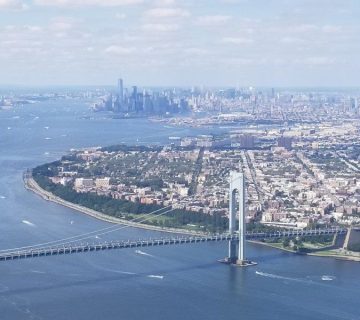The beauty of navigating New York City is its public transportation system. It is the lifeline that connects Manhattan, Queens, the Bronx and Brooklyn, and is such a big asset that rents are influenced by how close an apartment is to a subway station. As a New Yorker, one of the questions I am asked very if is – does the NYC subway run 24 hours? And the answer is a resounding Yes! While the frequency does decrease during nights and weekends, subways do run 24/7, and are an essential part of New York City’s infrastructure that we take for granted, though it is advisable to stay alert and not fall asleep if you are using public transportation at night, which I do.
Table of Contents
NYC Subway 24-Hour Service
The New York City subway is well known for its extensive network and 24/7 service, making it one of the most cost and time efficient transportation options in the city. The subway keeps up with the city that never sleeps by operating 24 hours a day, 7 days a week, and 365 days a year. Even though the trains run less frequently at night, subway stations still operate at night, though you may see some changes like less frequent service, or express trains running on the local track at nights, or changes in service for maintenance, especially on nights and weekends.
If there is a scheduled service outage on a subway line, you can expect to see information posted online, at the subway station, and alternate subway lines being suggested where possible or made – such as a bus service to replace a subway line – as the MTA will get you to where you need to go.
While you are in a subway station, I recommend you take a minute to appreciate all the art at the subway stations, which is quite incredible and of museum quality in a totally unexpected setting.

Subway Service and System
Routes and Lines
The NYC subway system, operated by the Metropolitan Transportation Authority (MTA), is the largest and busiest in North America, operating in Manhattan, Brooklyn, Queens, and the Bronx. The subway consists of 493 stations on 25 routes (which includes 3 short shuttles), spanning 693 miles of track. Each route is color-coded on the subway map, which makes it very easy to navigate. The MTA has a live map online, though Google Maps offers a fairly accurate listing of when you can expect a train they recommend on your route to arrive.
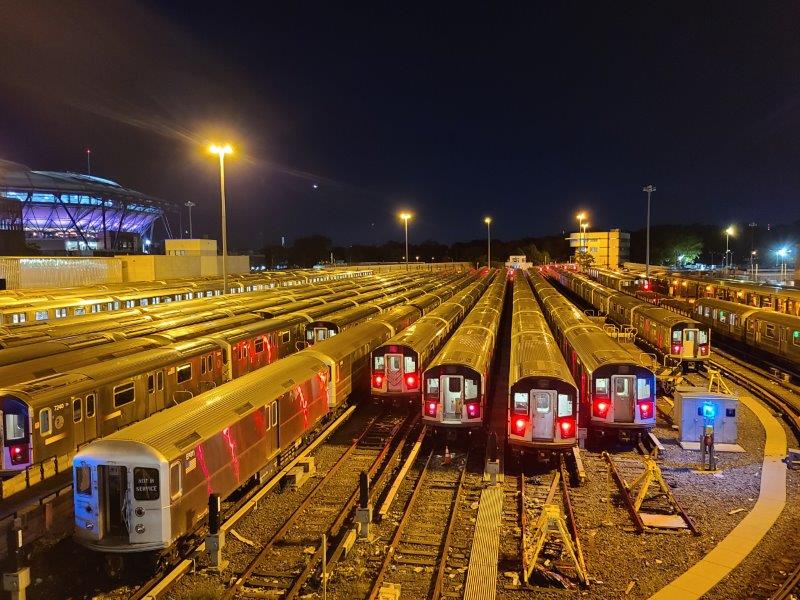
In Manhattan, the subway system is oriented around the downtown-uptown axis, with multiple lines servicing each area. Brooklyn, Queens, and the Bronx enjoy extensive subway coverage that connects them to Manhattan and also provides intra-borough transit.
NYC subway lines are:
- 1 (Broadway–Seventh Avenue Local)
- 2 (Seventh Avenue Express)
- 3 (Seventh Avenue Express)
- 4 (Lexington Avenue Express)
- 5 (Lexington Avenue Express)
- 6 (Lexington Avenue Local/Pelham Express)
- 7 (Flushing Local and Express)
- A (Eighth Avenue Express)
- B (Sixth Avenue Express)
- C (Eighth Avenue Local)
- D (Sixth Avenue Express)
- E (Eighth Avenue Local)
- F (Sixth Avenue Local/Culver Express)
- G (Brooklyn–Queens Crosstown Local)
- J (Nassau Street Local/Broad Street Express)
- L (14th Street–Canarsie Local)
- M (Queens Boulevard Local/Sixth Avenue Express)
- N (Broadway Express)
- Q (Broadway Express/Brighton Express)
- R (Broadway Local/Queens Boulevard Local)
- W (Broadway Local)
- S (42nd Street Shuttle)
- Z (Nassau Street Express)
- S (Franklin Avenue Shuttle)
- S (Rockaway Park Shuttle)
While Staten Island is not connected by subway, the MTA does operate a Staten Island Railroad as a rapid transit line on Staten Island, and a free ferry that connects Manhattan to Staten Island. In fact, some of the best views of the Statue of Liberty can be seen from this free ferry!
Subway Fare and Tickets
As of October 2023, the subway fare is $2.90 per ride irrespective of the distance you are traveling This includes any transfers you need to make to MTA buses along your route, making it a very cost efficient option for its millions of users. 7 day passes are for $34, and monthly passes are for $132.
New York is transitioning from Metrocards that have been in use for a long time to OMNY, which is a contactless payment system for MTA buses and subways in NYC. You can use just your digital wallet or credit card to swipe through, which is incredibly convenient. Best of all, if you use the same card/wallet for payment and you swipe through more than 12 times starting with Monday, it automatically transitions to a weekly pass and there are no additional charges for the rest of your rides through Sunday.
Accessibility and Fares
The subway stations spell out which stations offer accessibility features for passengers with disabilities. Many stations have elevators, ramps, and assistance for those who require it. Additionally, reduced fares are available for passengers who are 65 years and older, have disabilities, or are considered low-income New Yorkers.
For passengers with disabilities, buses offer a very convenient option as you do not need to navigate stairs and elevators to access the underground subway system. For instance, I chose to take buses when I had a sprained ankle, which made navigating the stairs and distances within subway stations difficult to navigate, though it added considerable time to my commute to and fro from work as an example.
How you can tell if a Subway Station is open
The MTA indicates if a station entrance is open by a green light outside the station. If it is closed and you cannot enter from there, the light will be red as you can see in the pictures below.
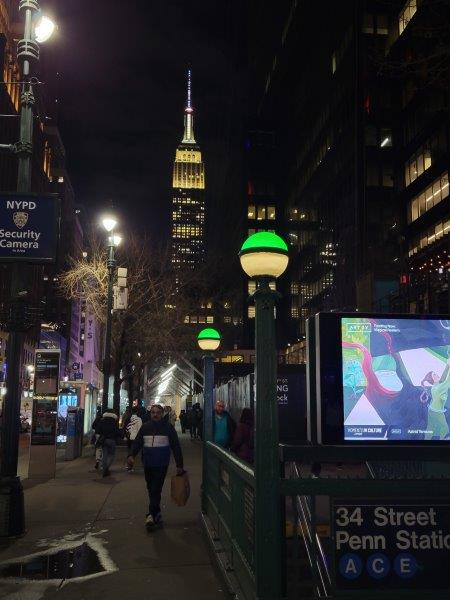

Adjacent Transit Options
The NYC subway system is well-integrated with other transit options in the metropolitan area, notably the Long Island Rail Road (LIRR), New Jersey Transit, Amtrak and Metro North Railroad.
LIRR provides commuter rail service between Manhattan and Long Island, with major transfer hubs at Penn Station and Atlantic Terminal.
New Jersey Transit connects New York City to various destinations in New Jersey, with a major hub at Penn Station.
Amtrak connects to its extensive network across the US from its hub at Penn Station.
Metro-North runs north from New York City to various destinations in New York and Connecticut.
MTA Bus Service
Routes
New York City Transit, operated by MTA, provides extensive bus service throughout the five boroughs. With 234 local bus routes, 20 Select Bus Service routes, and 73 express bus routes, passengers have numerous options to travel across the city. All buses in the fleet are 100% accessible to riders with disabilities, ensuring an inclusive transportation experience for all.
Frequency
As the MTA bus service operates throughout the day, there might be variations in frequency depending on the time and the specific route. While the exact number of buses running on each route may differ, it is essential to be aware of the fare structure for bus travel.
Local, SBS, and Limited buses have a standard fare of $2.75 for most riders, while express buses charge a $6.75 fare. You can pay using various methods, including OMNY, MetroCard, coins, or a SingleRide ticket. Reduced fare options are available for people who are 65 or older, or those with a qualifying disability.
It is important to remember that schedules can change due to maintenance or construction work, especially over nights and weekends, so it is always advisable to check the MTA’s official website for the most up-to-date information when planning your trip.

Difference between taking subway or bus
The New York City subway and bus systems offer reliable and efficient means of transportation for residents and visitors. However, there are key differences between these two modes of transportation that can impact a traveler’s decision.
Subway
The NYC subway operates 24 hours a day, 7 days a week, and 365 days a year. Riders can travel quickly to various destinations throughout the city, as the subway system covers a vast area with numerous lines and stations. The subway fare is $2.75, and reduced fares are available for people 65 and older, people with disabilities, and low-income New Yorkers.
However, service can be more sporadic late at night and on weekends, making it vital for travelers to review planned service changes to avoid unwanted surprises. Additionally, subway stations can sometimes be difficult to navigate or crowded during peak hours.
Bus
Buses in New York City offer an alternative for those who prefer traveling above ground. They reach neighborhoods that the subway system may not cover, providing a more extensive reach within the city. Buses may also provide a more predictable schedule, as they are less prone to service interruptions due to construction or maintenance.
All buses are 100% accessible to riders with disabilities.
Buses are, however, affected by traffic congestion and might take longer to reach a destination despite having dedicated bus lanes which were introduced a few years ago.
Closing Thoughts
New York City offers an amazing public transportation system that is easy to navigate, and is both cost and time efficient any which way you look at it. It is used extensively by New Yorkers and visitors alike, and New Yorkers are happy to answer any questions you may have about navigating it as long as your questions are not causing them to miss a train or connection!
Making a choice between the subway and bus systems depends on your point of origin and destination, schedule, and especially your personal preferences.
The best part of it is that NYC subways do run 24/7, and are viable transportation option at all times.

